AppleInsider · Kasper's Automated Slave
About
- Username
- AppleInsider
- Joined
- Visits
- 52
- Last Active
- Roles
- administrator
- Points
- 10,973
- Badges
- 1
- Posts
- 66,634
Reactions
-
Apple Pay Express Mode comes to New South Wales
The Opal Network in New South Wales, Australia, now accepts Apple Pay Express Mode, speeding up transactions at the turnstile.
Apple Wallet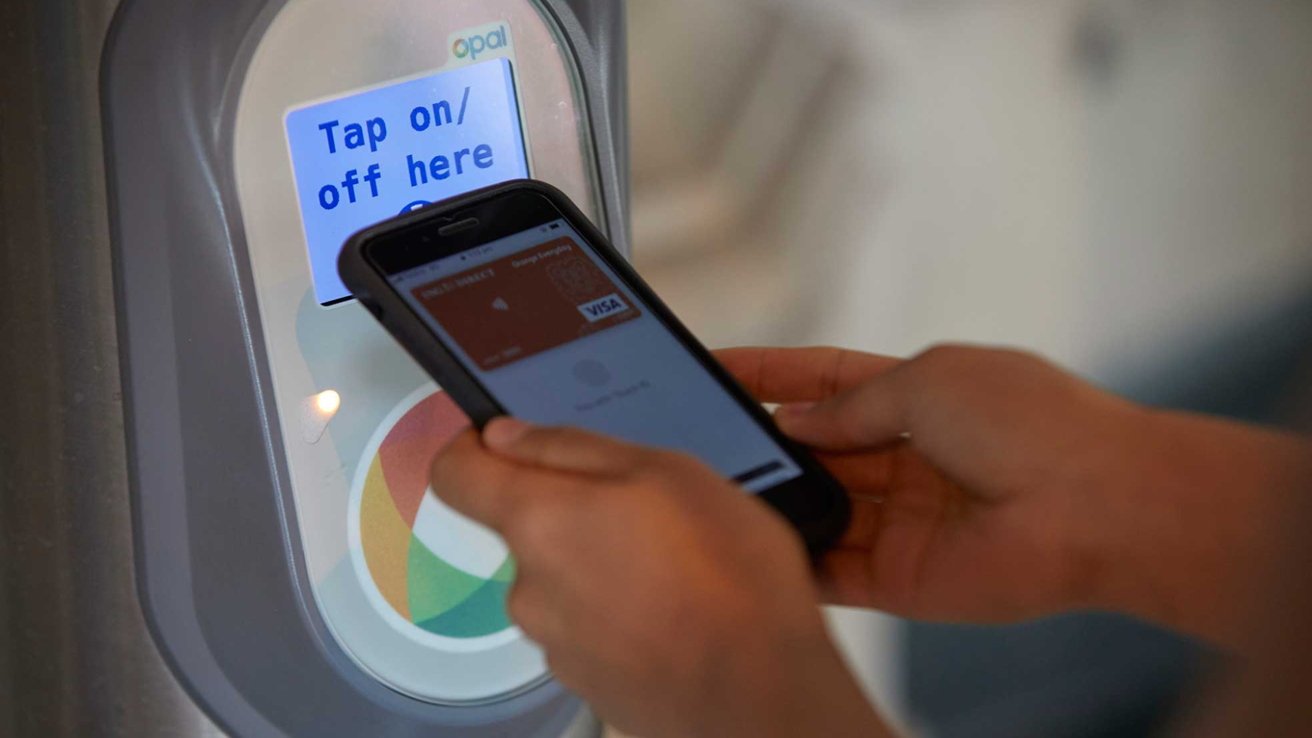
Opal Networkhas a feature called Express Transit which enables users to tap their iPhone or Apple Watch to a transit terminal without a passcode. It works even when the device has lost power, thanks to a power reserve mode.
Members of the Opal Network can now take advantage of Express Mode via Apple Pay in New South Wales, Australia. Users only need to activate their card within the Apple Wallet app for use with Express Mode.
To enable Express Mode on iPhone:- Open the Settings app.
- Select "Wallet & Apple Pay."
- Select "Express Transit Card."
- Choose the card you wish to use with Express Mode
To enable Express Mode on Apple Watch:- Open the Settings app.
- Select "Wallet & Apple Pay."
- Select "Express Mode."
- Choose the card you wish to use with Express Mode
When Express Mode is activated, users can tap a transit terminal without needing to wake the device or enter a passcode. This works when entering or exiting a location.
Power reserve kicks in when a battery is depleted. This means a small reserve of battery remains to ensure Express Mode is still active for up to five hours, even without any charge available to power on the device.
Read on AppleInsider
-
Why Apple uses integrated memory in Apple Silicon -- and why it's both good and bad
Apple's Unified Memory Architecture first brought changes to the Mac with Apple Silicon M1 chips. There are clear architectural benefits for the hardware -- and it is both good and bad for consumers. Here's why.

Apple's Unified Memory Architecture (UMA) was announced in June. 2020 along with its new Apple Silicon CPUs. The UMA has a number of benefits compared to more traditional memory approaches and represents a revolution in both performance and size.
In traditional desktop and laptop computer design, the main system memory known as RAM sits on a system bus which is separate from the CPU and the GPU.
A bus controller is typically required, which uses interrupts when the CPU needs data from the main system memory. Interrupts are hardware signals different parts of a computer use to pause other parts of the system while a task is performed.
Interrupts cause delays in system processing.
So for example, every time the CPU needs to access data in memory or every time the screen needs to be refreshed, an interrupt is generated, the system pauses, and the task completes. When the task is done, the system resumes general processing.
Direct Memory Access (DMA) was introduced later, but due to motherboard sizes and distances, RAM access can still be slow. DMA is a concept in which some computer subsystems can access memory independently of the CPU.
In DMA the CPU initiates a memory transfer, then performs other work. When the DMA operation is complete, the memory controller generates an interrupt signalling the CPU that data is ready.
RAM access is but one type of interrupt in traditional computer architecture. In general the more busses and interrupts, the more performance bottlenecks there are on a computer.System on a chip
Graphics Processing Units (GPUs) and game consoles have long solved this problem by integrating components into single chips which eliminates busses and interrupts. GPUs for example, usually have its own RAM attached to the chip, which speeds up processing and allows for faster graphics.
This System on a Chip (SoC) design is the new trend in system and CPU design because it both increases speed and reduces component counts - which reduces the overall cost of products.
It also allows systems to be smaller. Smartphones have long used SoC designs to reduce size and save power, such as with Apple's own iPhone ARM SoC.
Sony's PlayStation 2 was the first consumer game console to ship with an integrated SoC called the Emotion Engine which integrated over a dozen traditional components and subsystems onto a single die.
Apple's M1 and M2 ARM-based chip designs are similar. They are essentially a SoC design that integrates CPUs, GPUs, main RAM, and other components into a single chip.
With this design, instead of the CPU having to access RAM contents across a memory bus, the RAM is connected directly to the CPU. When the CPU needs to store or retrieve data in RAM it simply goes directly to the RAM chips.
With this change, there are no more bus interrupts.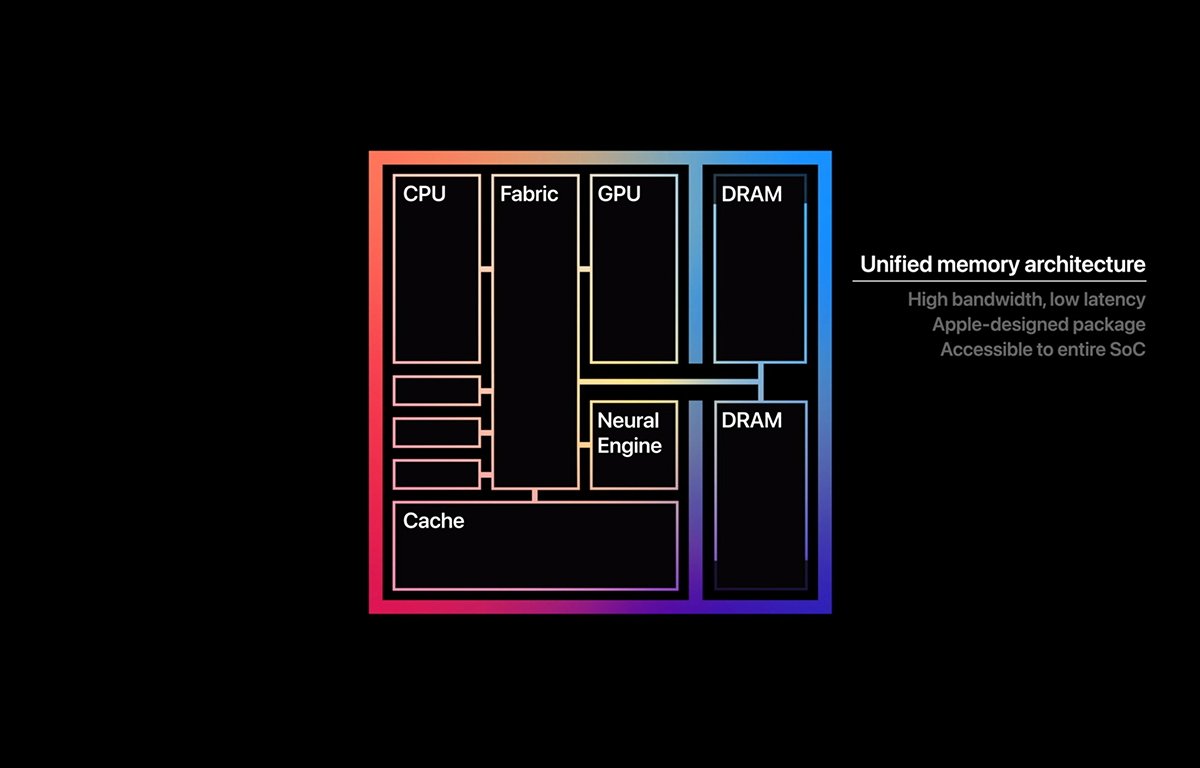
Apple's M1 integrated architecure.
This design eliminates RAM bus bottlenecks, which vastly improves performance. M1 Max, for example, provides 400GB/sec of memory throughput - approaching that of modern game consoles such as Sony's PlayStation 5.
SoC integration is one of the main reasons the M1 and M2 series of CPUs are so fast - and why modern console game-level graphics are finally coming to the Mac.
It's why macOS finally feels snappy and responsive after feeling slightly rubbery for decades.
SoCs also vastly reduce power consumption, and heat, which makes them ideal for laptops, phones, tablets, and other portable devices. Less heat also means the components last longer and suffer less material degradation over time.
Heat affects system performance over time as it slowly diminishes the materials' properties contained in components, which leads to slightly lower performance. This is one of the reasons why very old computers seem to "slow down" with time, and a big cause of failures.
"Heat is the enemy of electronics" as they say in the EE world.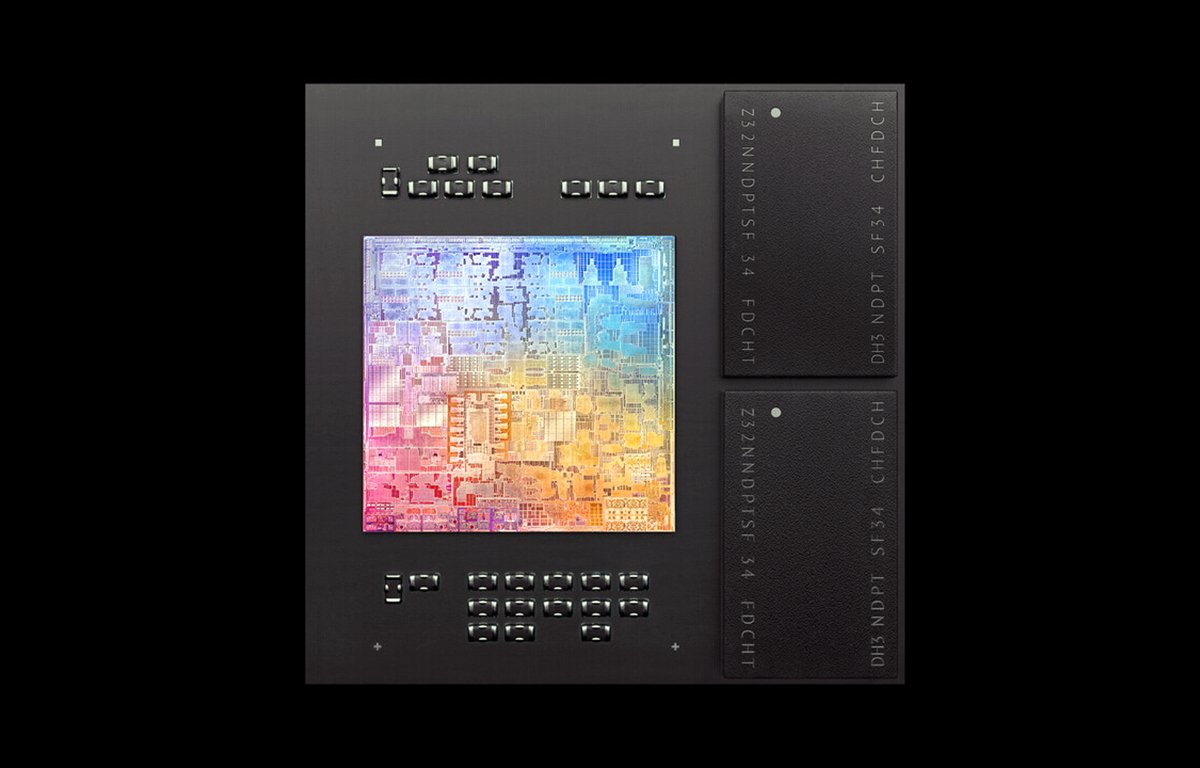
Apple's M1 CPU with integrated RAM.The downside of integrated memory in Apple Silicon
While Apple's SoC designs have proven to be vast improvements over its traditional designs, there are some downsides.
The first, and most obvious one is upgrades -- with the system RAM contained in the CPU itself, there's no way to upgrade the RAM later, except to replace the CPU - which, with modern Surface-Mount Device (SMD) soldering technology, you probably wouldn't want to do.
Earlier Mac models had banks of RAM DIMMs (Dual in-line Memory Modules) or memory "sticks" which could be swapped in and out for larger sizes to upgrade memory.
With Apple Silicon that option goes away since the RAM chips themselves are manufactured into the CPU. When you buy an Apple Silicon Mac, you're stuck with whatever RAM size you initially ordered.
Another downside is that if the RAM or CPU fails, the entire thing fails. There's no replacing just one part, you have to do it all.
Modern Mac motherboards are so tiny with mostly SMD components. In most cases, it's cheaper and faster just to replace the entire thing, or just buy a new Mac.
Another, and equally obvious downside to SoCs is that the use of integrated GPUs means there's no way to upgrade your Mac's graphics card later for a faster or bigger version. And with Apple dropping support for external Thunderbolt GPU expansion boxes in Apple Silicon, even external GPU expansion is no longer an option.
What all of this means, of course, is that modern Macs are becoming more and more like "appliances" than like computers as we have traditionally thought of them.
Overall, this is a good thing.
It means you're going to want to buy a new Mac every few years, but the performance improvements make that upgrade path are worth it. Compared to Apple's old Intel-based traditional architecture, Apple Silicon is a complete revolution in terms of performance.
As systems get smaller and smaller, so will devices. Laptops will become thinner and lighter, and battery life will continue to improve - even as performance improves over time.
In a few years' time, there's no doubt Apple will have advanced Apple Silicon far enough that a new Mac will make the cost worth it. Time is money, and the amount of work you can get done on modern Macs using Apple Silicon far outweighs the cost of the upgrading.
You can read more about the technical details of Apple Silicon on Apple's developer website.
Read on AppleInsider
-
Second Apple Watch Ultra due this fall on Apple's product roadmap
Apple's product release roadmap includes three Apple Watch launches for the fall, a report claims, including two Apple Watch Series 9 models and a second-generation Apple Watch Ultra.
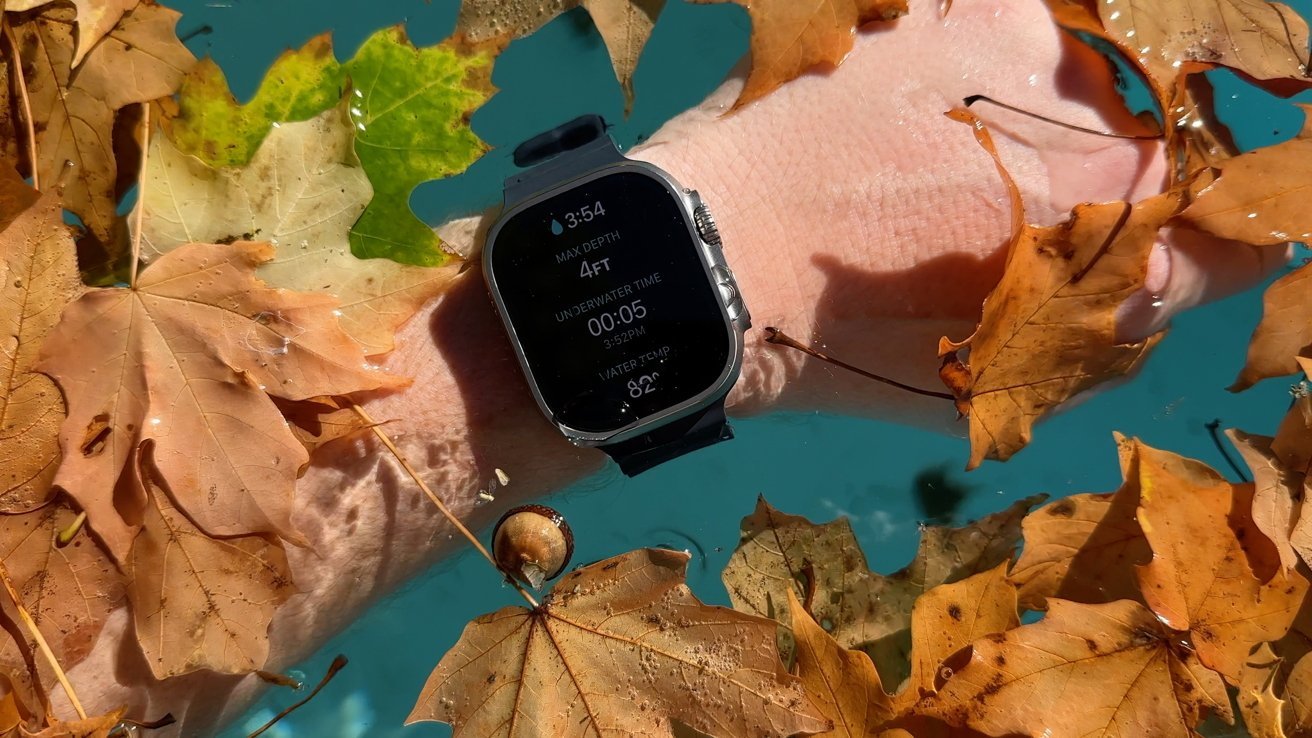
Apple Watch Ultra
Following the introduction of the Apple Vision Pro at WWDC, the attention of the rumor mill turns to the rest of Apple's product catalog. Among the expected inbound devices are a trio of Apple Watch models, which should arrive as part of Apple's usual fall lineup.
In Sunday's "Power On" newsletter for Bloomberg, Mark Gurman outlines the product roadmap for the second half of 2023 and the first half of 2024. At the top of the list, alongside the iPhone 15 lineup, Gurman offers there will be three Apple Watch models introduced in the fall.
The watches are codenamed N207, N208, and N210, with two being part of Apple Watch Series 9, while the third is an "updated version of the Ultra." Gurman doesn't offer further details about what to expect from the models.
Other products listed on the roadmap include an M3-equipped 13-inch MacBook Pro, M3 Pro and M3 Max versions of the 14-inch MacBook Pro and 16-inch MacBook Pro, and New MacBook Air models. A couple of iMacs are also anticipated with 24-inch displays, though "early work" on a version with a screen over 30 inches in size is also apparently happening.
For iPads, Gurman says revamped iPad Pro models with OLED displays are expected, as well as a new iPad Air to replace the existing M1 model.
Gurman also mentions other products in early development, including third-gen AirPods, "home equipment" including smart displays, and an improved Apple TV.
Read on AppleInsider
-
Apple replacing shuttered North Carolina store with new location
Three months after Apple closed a North Carolina retail store, it has filed permits to start construction on a new location, just a handful of miles away.

Birkdale Village, North Carolina
Permits have been filed for construction at 8805 Townley Road in Birkdale Village. It will open as part of a larger effort to rejuvenate the area with new properties, including Anthropologie, Lilly Pulitzer, Cheesecake Factory, and other new retail venues opening at the center.
Birkdale Village is a 250,000 square foot outdoor retail center. Stores in the area number 60, and currently include Warby Parker, Barnes & Noble, Kendra Scott, Lovesac, Sephora, Total Wine & More, Dick's Sporting Goods, and more.
The location has in total 320 apartments and over 50,000 square feet of office space as well.
The new location is about eight miles away from the closed Northlake Mall location. The still open SouthPark location is about 17 miles away, on the other side of Charlotte, North Carolina.
The permits do not fully disclose the square footage of the store. It is expected that the store will adopt the new design principles most recently demonstrated in the renewed Tysons Apple Store, and the recent Battersea opening in the UK.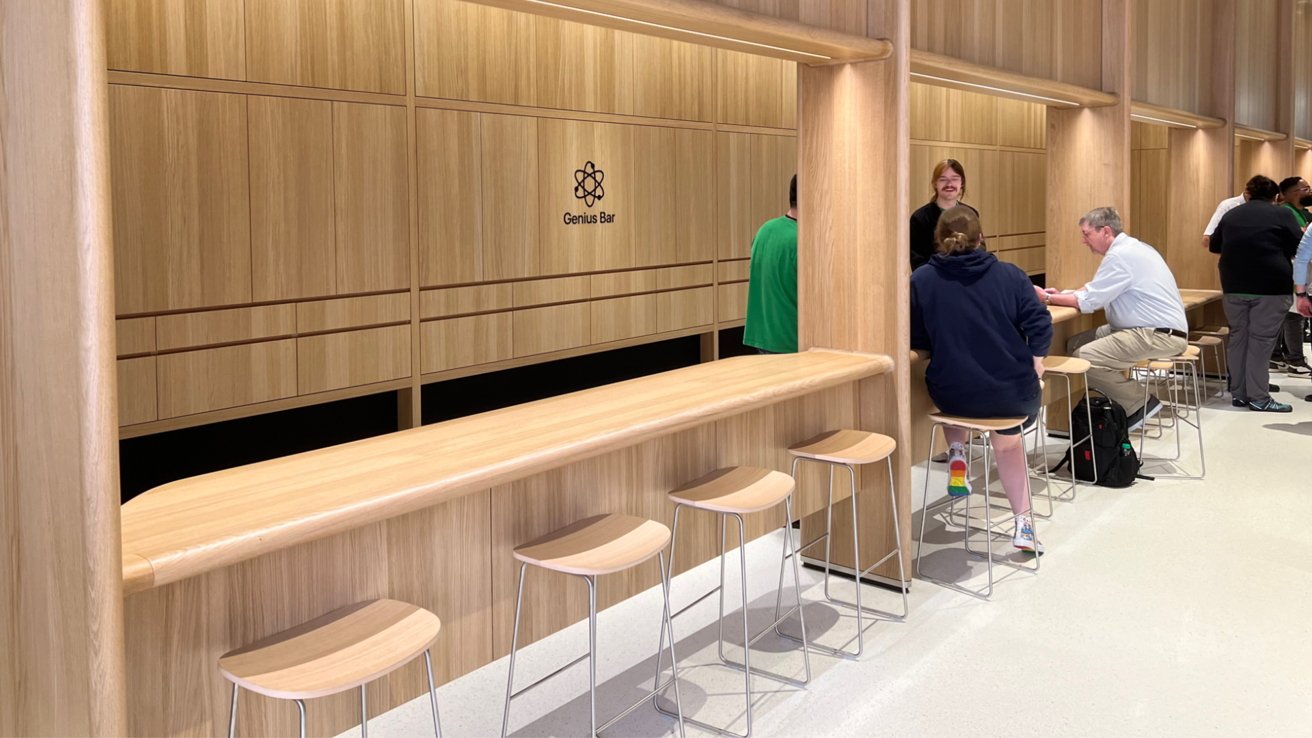
The Genius Bar returns
The move, first spotted by the Charlotte Business Journal comes after the Northlake, North Carolina store shuttered abruptly and permanently in March. Reportedly, it was closed because the Northlake Mall suffered from at least three shootings within recent months, which prompted Apple to close the store.
On the day the store closed, a message on Apple's website said that a new store would open in Charlotte in early 2024. For the time being, customers are being directed to the SouthPark location or online sales and support venues.
Read on AppleInsider
-
Apple Vision Pro -- What came before, what will come after, and when
It's not hard to see the future of what the Apple Vision Pro started. Here's what's been said so far, and what we think is going to happen -- and when.
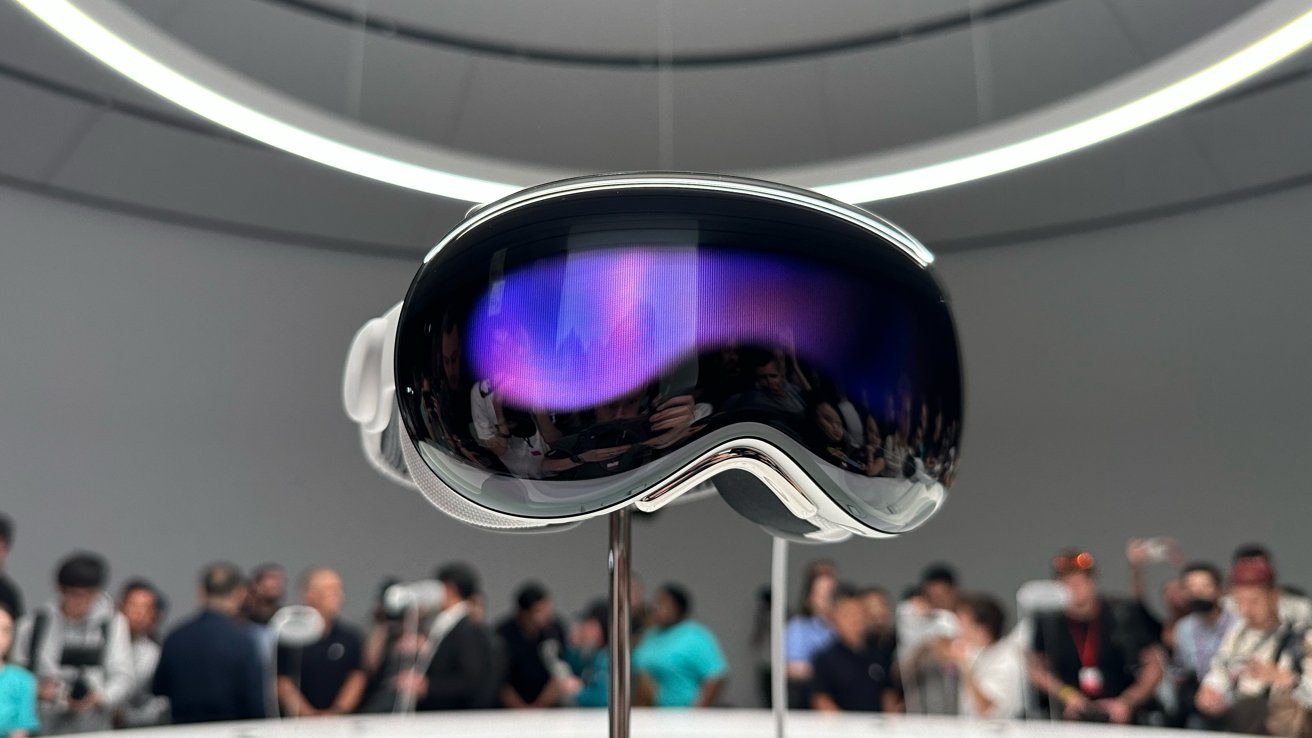
Apple Vision Pro
Apple announced the Apple Vision Pro headset at WWDC, after three years of rumors and buildup about what to expect. There were early rumors like Apple Glass that suggested that Apple was working on digital Wayfarers.
And, there was a very good leak about it in 2022 that detailed the general form factor of the device. It was amazingly close, as rumors go.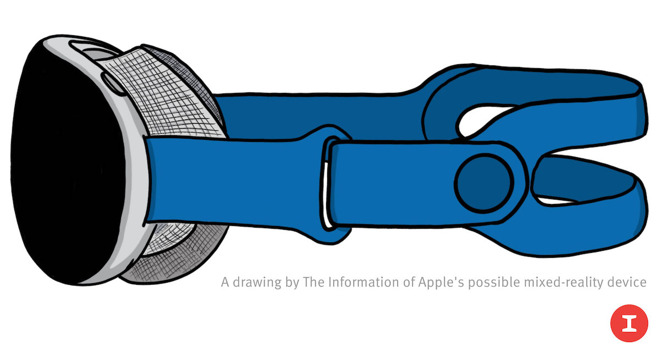
Credit: The Information
And, of course, the renders started. Some were close, some weren't.
But that's okay. That's the nature of the rumor game.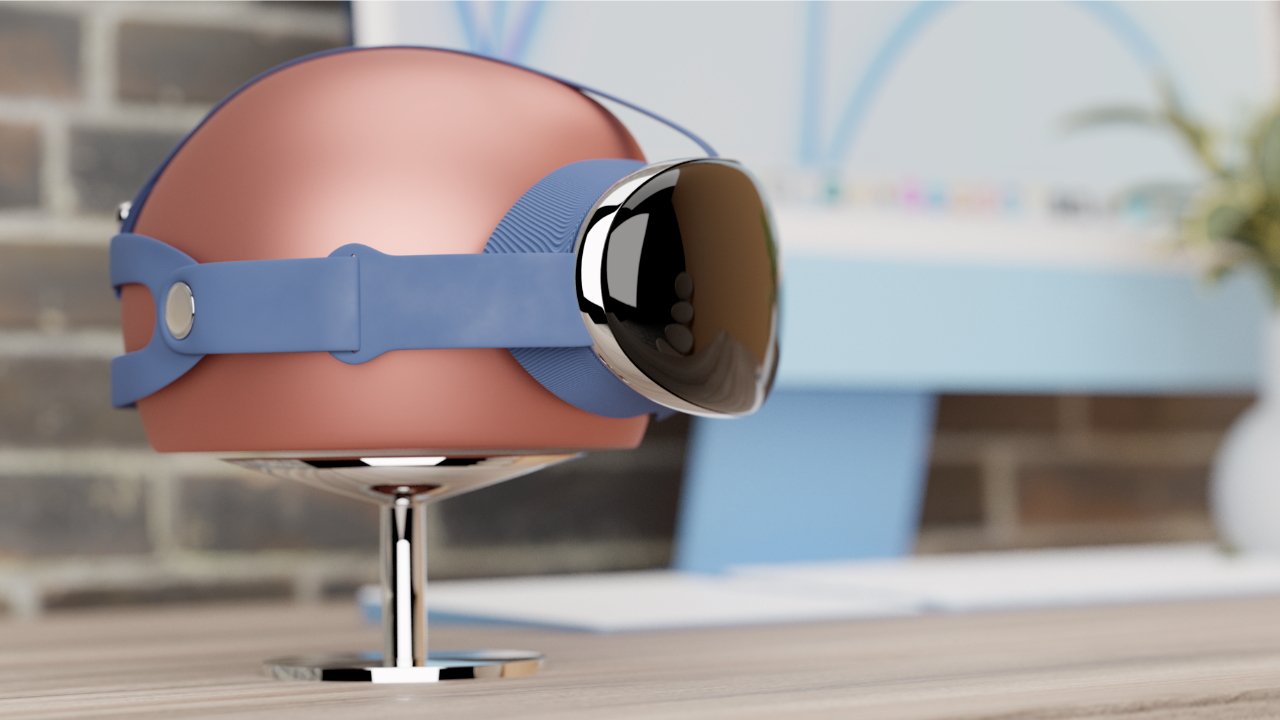
AppleInsider render built from Apple Vision Pro rumors
We're in a strange point where we think that most of the rumors surrounding Apple Vision and Apple Glass are true, in parallel.Apple has the money and resources to do more than one thing at a time
The Apple Vision Pro was said to be called "surfboard" as a code-name internally. The rumors along the way said that Apple was working on not just "surfboard" but another product called "starboard" as well.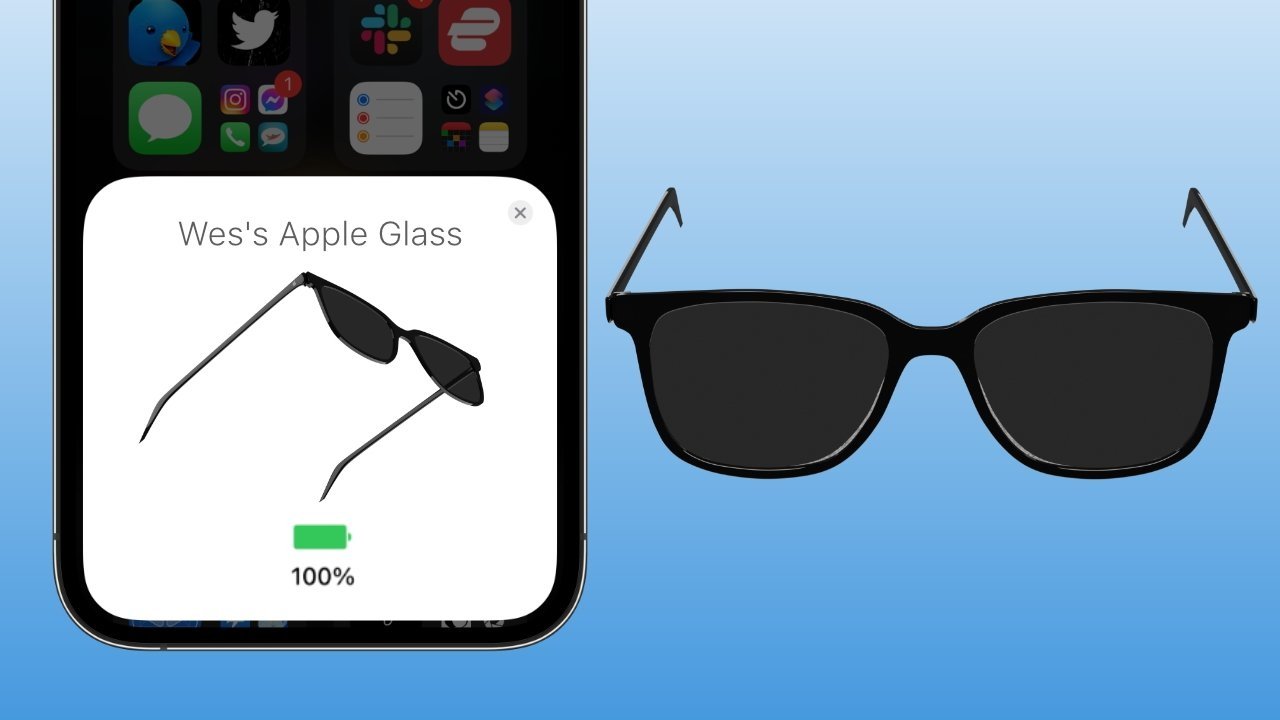
What the rumor mill is guessing 'Apple Glass' will look like
Apple itself has always seen the long game, and can work and refactor products for the future. The premature Newton ultimately spawned the iPhone albeit in a rambling route from here to there. The iPhone clearly and directly begat the iPad and the App Store. The App Store feeds the economic engine that is Apple.
The iPhone, ARKit, and Apple's decade-long work on Spatial Audio led directly to the tech in Apple Vision Pro.
It's also not hard to draw a line from Apple Vision Pro to the Apple Car. CarPlay was just the start of Apple's ambitions in the sector.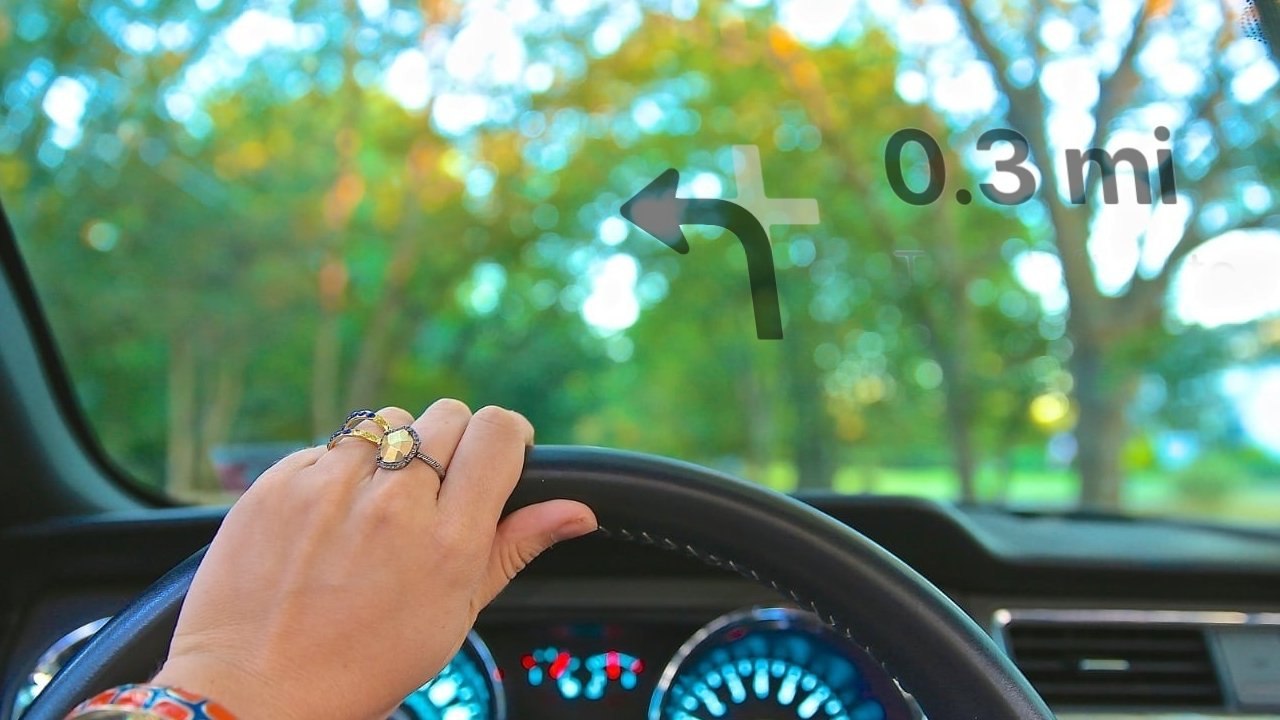
"Apple Car" windscreen could display a great deal of information directly where the driver is looking
There have been so many patents published over the last decade about how Apple intends on using AR to enhance the car experience.Apple Vision Pro is a start, and is clearly not for everyone
As much as we hate to say it, we see the Apple Vision Pro as a developer's kit that will ultimately be available at retail -- and it won't be for everybody. That $3499 starting price makes it obvious enough that it isn't yet for Ma and Pa America, yet.
It is intended at launch, as an aspirational product, bringing all the technologies Apple can muster in 2023 to bear, in a single product.
And, it will use that aspirational product to convince a wide consumer base, loaded with non-techies, that they want to be involved and buy in like they have for the iPhone. This is something that the other headset manufacturers have failed to do, so far.
There is some evidence that it is already shifting consumer mindset. If the tools that monitor search trends can be believed, there has been a four-fold increase in Google searches for terms surrounding augmented reality and virtual reality since WWDC.
And, that increase in search traffic for related terms has been linear since then. We'll see where it plateaus with the fullness of time. Apple's impact on the number of people searching for information on the topic is unmistakable, though.Technology marches on, and so will Apple Vision
Apple didn't stop development on AR hardware when it debuted the Apple Vision Pro. The next steps are smaller, faster, less expensive, and in parallel, better.
To that end, Apple uses "Pro" for a reason. Contrary to public opinion at times, it does not mean that you need this particular Pro-labeled product to make money. All it means is "this is the high end."
Every Pro product has been the higher end of what Apple could churn out for that particular product line.
Regardless that the Apple Vision Pro is the first of its name, we think that "Pro" means the same here. We think that Apple Vision Pro will be followed up by Apple Vision not-pro, and perhaps an Apple Vision Air at some point in the future, if the branding follows through.Apple is almost never first, and Apple Vision Pro is no exception
Ignoring that Apple Vision Pro is a herald of other things to come, it is a short-term warning shot to other headset manufacturers, the same way that the iPhone was that shot to BlackBerry. It is the same as the iPad was to Microsoft's tablet initiative that had been going on for five years in 2010.
If the rumor mill is correct, we're guessing 2025 for the "starboard" project. We suspect that this is the "Apple Glass" Wayfarers-like product that has been swirling in the rumor well since nearly the beginning.
The software will only get better. Apple will migrate all of its own apps. It will do it slowly at first to figure out what gets traction, but they will all come to the platform, eventually.
And, independent developers will get their say. Ultimately, the killer app will be developed by somebody hammering away now on their keyboard with the API that was just released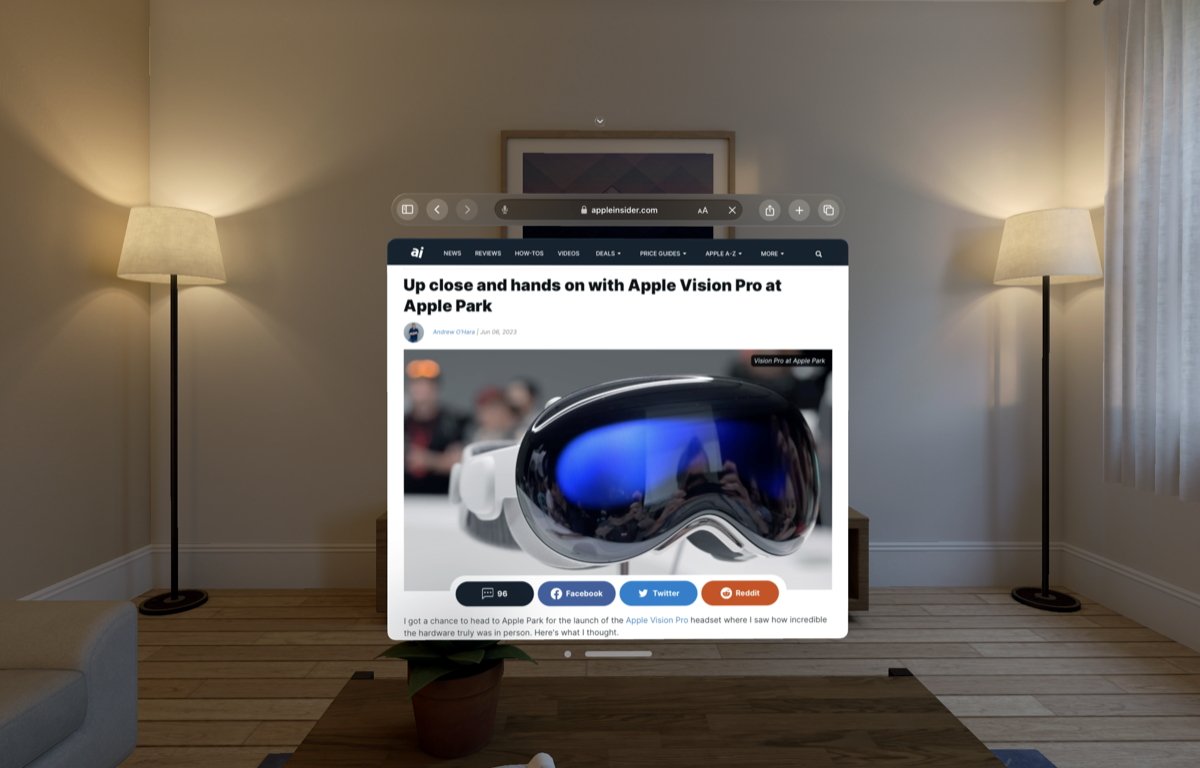
Safari running in windowed mode in visionOS is just the start.
Early Apple Vision pro software will be rough, like it was on the iPhone when developers got their crack at it. By the time the iPad came out, though, developers and Apple figured out what made a good app.
By the time the Apple Vision non-pro ships in 2025 or so, we expect the same refinement to have already happened.
We're excited to see what those developers bring. Apple probably is too.
As the old saying goes, you need to walk before you can run. Apple has launched into a market letting others walk, so it can run in 2024 when the hardware ships in volume to consumers.
And in around 2025, it will be sprinting, fueled by the developer community that got its first real glance at what the platform is capable of in its infant form on Wednesday.
Read on AppleInsider

